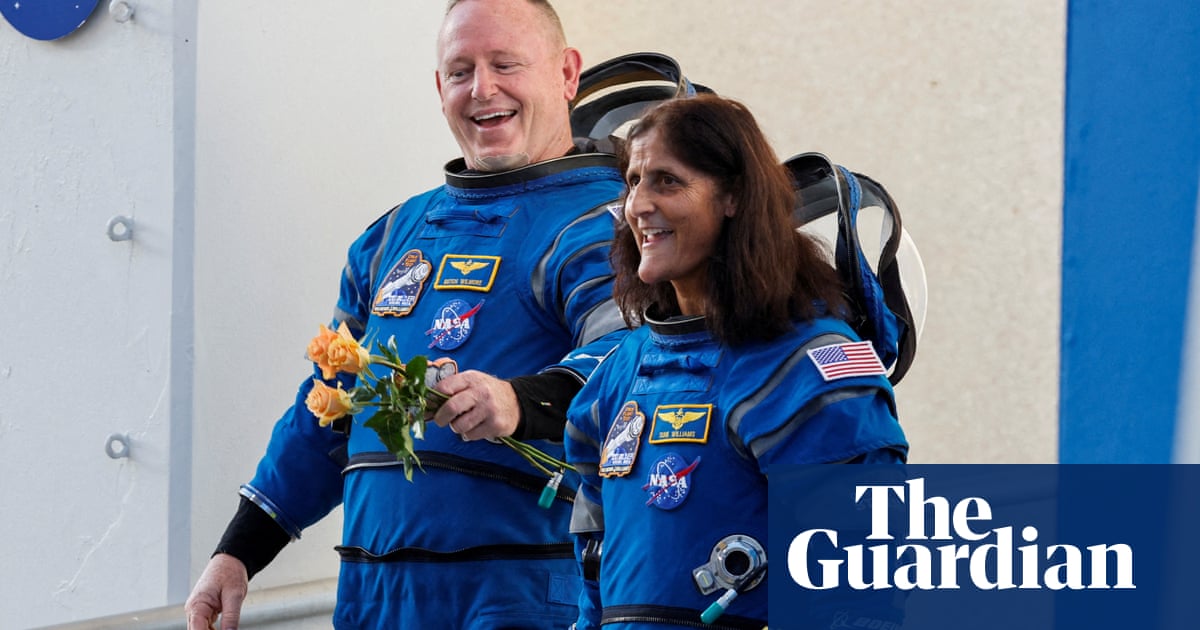Boeing’s public relations crisis is now out of this world: the company’s Starliner spacecraft – and the two astronauts on board – is currently stuck in space.
After what started as an eight-day mission, US astronauts Sunita “Suni” Williams and Barry “Butch” Wilmore have now spent the better part of a month on their space capsule attached to the International Space Station as engineers work out the problems with Starliner.
It remains unclear when exactly the astronauts will be able to make their return to Earth. A Boeing spokesperson told the Guardian they have “adjusted the return of Starliner Crew Flight Test until after two planned spacewalks on Monday, June 24, and Tuesday, July 2” and that they “currently do not have a date for the return, and will evaluate opportunities after the spacewalks”.
The spokesperson also noted “the crew is not pressed for time to leave the station since there are plenty of supplies in orbit, and the station’s schedule is relatively open through mid-August”.
The Starliner blasted into space on 5 June from Florida’s Cape Canaveral Space Force Station after two previously unsuccessful launches on 6 May and 1 June respectively.
A year behind schedule and $1.5bn over budget, this particular Nasa-Boeing mission had problems long before its official launch, including issues with reaction control thrusters and helium leaks.
The Boeing spokesperson noted that the helium leaks and most of the thruster problems have been “all stable and not a concern for the return mission.
“Four of the five thrusters that were previously shutting down are now operating normally. This means only one thruster out of 27 is currently offline. This does not present an issue for the return mission,” the spokesperson added.
Nasa and Boeing officials insist the astronauts are not stranded and that the technical difficulties do not threaten the mission. Nasa said the spacecraft requires seven hours of free-flight time to perform a normal end of mission and it “currently has enough helium left in its tanks to support 70 hours of free flight activity following undocking”.
Steve Stich, Nasa’s commercial crew program manager, said in a press briefing last week: “We are taking our time and following our standard mission management team process. We are letting the data drive our decision making relative to managing the small helium system leaks and thruster performance we observed during rendezvous and docking.”
The spacecraft is cleared to undock and return to Earth if there’s an emergency or need for a quick departure.
“While Starliner is docked, all the manifolds are closed per normal mission operations preventing helium loss from the tanks,” Nasa said.
If the Starliner is not safely operational, it’s possible Williams and Wilmore will have to catch a ride with the crew on SpaceX’s Dragon spacecraft, which is also currently attached to the International Space Station on the opposite side.
Boeing’s latest crisis comes on the heels of other public crises they’ve had with various commercial aircrafts, though the company insists they operate separately.
The Starliner launch is the sixth journey of a US-crewed spacecraft since the space race began in the late 1950s.

